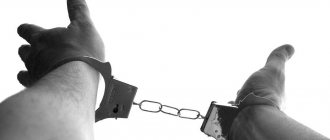Definition
Self-control is the ability to maintain internal control in any situation due to the presence of certain qualities. These include courage, determination, and the presence of willpower.
To control the emotions seething inside and not let them out, you need to have a large amount of additional energy. Some people cope with emotional outbursts with a single breathing technique, while others require extensive practice to remain calm.
Self-control is useful in the following situations:
- Change of job or field of activity. Change scares people. In the first days in a new place, a person experiences severe stress. It is associated with a number of doubts about joining an unfamiliar team or the ability to cope with the assigned tasks.
- Loss of loved ones. In this situation we are talking about serious psychological trauma. Such mental wounds take a long and painful time to heal. At such moments, it is important to have a shoulder nearby that you can lean on in difficult times.
- Sessions. Passing exams for students is a period of heightened anxiety. For most examinees, emotional shocks have a negative impact on the general condition of the body - headaches, sweaty palms, and loss of appetite. There is only one way out of this state - to pull yourself together and, through an effort of will, overcome the fear of the upcoming test for the sake of its successful outcome.
- Resentment. Harsh remarks or a negative assessment of any actions lead to disappointment in oneself and a complete loss of self-confidence, especially if they were expressed by a loved one.
Self-control is an important character trait. Anyone who has developed it in himself remains a happy person for the rest of his life.
Are you ready to stop thinking about your problem and finally move on to real actions that will help you get rid of your problems once and for all? Then perhaps you will be interested in this article .
The skill of using self-control in conflict situations will help you avoid unpleasant consequences.
The difference between self-control and endurance
People sometimes confuse the concepts of endurance and self-control.
The first refers to a person’s ability to stand his ground to the end, regardless of the level of difficulty of the obstacle. One of the main manifestations of endurance is stoicism. It helps to endure life’s adversities, mental anguish and suffering. In other words, endurance is the ability to activate the inhibitory functions of a person’s will and turn off feelings and emotions that may interfere with the implementation of plans. People with this quality choose the right level of activity that suits specific circumstances.
The main difference between self-control and self-control is emotional control. In the first case, all feelings and emotions are relegated to the background, in the second, they are carefully controlled.
People develop both qualities as they grow older.
The Art of Self-Control
The ability to control oneself and remain calm in any situation, tolerance when communicating with people, the ability to act under the influence of the mind and not the heart - these are the qualities that characterize the art of self-control. A person who has mastered it acquires the qualities of a leader and is able to lead others.
The art of self-control allows you to get rid of doubts, restrain anger and other negative emotional impulses, and maintain balance in critical situations. The ability to show restraint and make informed decisions reveals strong-willed human nature.
The following obstacles may arise on the path to mastering such an art:
- Self-doubt is a person’s main companion. Because of it, people lose courage and determination. To overcome this feeling, you need to change your attitude towards yourself - feel your inner strength, get rid of anxiety and laziness.
- Temptations. The ability to resist them means saying no to some desires and not giving in to social pressure. You need to be patient, gather your willpower and go towards your goal.
- Emotional resistance - manifests itself in uncertainty and doubts before making any decision regarding changes in the usual way of life. If a person is going to do something new, he has set aside a specific period of time, and at that very moment he will want to quit everything and do something else. In the process of acquiring the skill of self-control, at first a person is always accompanied by an internal struggle with himself.
Most of the difficulties on the path to self-control are brought to a person by the people around him and his own ego. It is especially difficult to adjust the regime and habits established over the years at first. In times like these, it's more important than ever to take time to learn self-control.
What is self-control?
Self-control is the ability of a person to remain calm in any difficult situation. In this way, self-control is developed, you are not born with it. Its development can be done at any age. Although the easiest way to become a stress-resistant person is to cultivate this quality from childhood.
Self-control is the ability to pull yourself together, as well as:
- Control your own and others' emotions.
- Make informed decisions.
- React quickly and adequately assess the situation.
- Stay calm and confident.
- Maintain stability despite the pressure that is placed on the person.
Self-control can be compared to the strength of a tree that sways, but continues to stand in its place, despite the force of the wind that is exerted on it. The wind uproots weak trees and carries them wherever it is convenient for them. And strong, strong trees continue to stand in place, despite the fact that they are shaken very strongly.
A person, if he has self-control, can also hesitate, worry, and experience negative emotions and impulses inside. However, he remembers at the most critical moment that he has a goal. And to achieve it, you need to take specific actions and solve problems, and not aggravate the situation.
It can be said that one of the ways to develop self-control is to set goals. Moreover, this goal should be very important and meaningful for a person. At the most difficult moment, a person is asked to remember what goal he is striving for. And this will allow him to moderate his ardor in order to find the right words and perform exactly those actions that are needed in his situation.
go to top
Self-control and its loss
There are moments when a person loses control over himself and is led by emotions, thus betraying internal values. The consequences of losing self-control are quite sad:
- deep feeling of shame;
- a state of permanent hysteria;
- venting negative emotions through harming things or quarrels with loved ones;
- loss of respect from people who witnessed the emotional breakdown;
- imbalance of the nervous system.
People don't lose their temper overnight. This is facilitated by a series of circumstances that occur over a certain period of time.
A person who practices the development of self-control catches the first signs of irritation and suppresses them in himself. The main problem for many is the inability to recognize alarm bells. At the moment of loss of self-control, people lose control of themselves, words and emotions, after which the realization of what happened comes, mixed with a pressing feeling of guilt and shame.
It is very easy to change others, but much more difficult to change yourself. (Oscar Wilde)
KONSPEKTY.NET
Self-control, which is talked about so much, is an individual trait of a person, manifested in the ability to maintain inner calm under the influence of surrounding factors.
The emergence of self-control is attributed to the creation and strengthening of socio-cultural stereotypes and attitudes that were formed in the family. Simply put, self-control is cultivated from a very early age and instilled in the same way as politeness, table manners and other manners.
Self-control, as a general concept, includes:
- presence of a confident look and calm body movements (“steady hand”);
- quick and accurate reaction, both physical and psychological;
- control over actions and words, emotions (your own and others);
- resistance to any situations that arise;
How to develop endurance and self-control?
Self-control is based on the ability (habit) to control your behavior, speech, movements and emotions. That is, endurance is a formed habit of behaving in a certain way and it must be practiced, or better said, undergo constant training.
The development of willpower begins with endurance - the ability to withstand difficulties and situations, achieve what you would like, and continue to act when everything seems lost.
Who is a self-possessed person? A self-controlled person (one who has self-control) by definition does not allow himself to exhibit impulsive actions - to act on a hot head, to get excited. In addition, he easily controls his mood and does not allow it to manifest itself, either in an excessively negative form or in an excessively exalted positive manner. He also differs from those around him in his endurance and composure.
Short-term irritants are not capable of shaking the strong mental health of such a person, and temporary physical inconveniences (hunger, thirst, fatigue, etc.) do not lead to panic.
As for the positive attitudes that such a person develops, their list is quite clear: the presence of courage, determination, as a collective volitional characteristic of the individual.
Mastering the art of self-control
It’s not for nothing that they say that self-control is an art. To begin with, a person must develop inner confidence and self-control - two necessary layers - on which the rest of the positive personality traits will then be based.
In order to form:
- To develop patience, you need to experience inconvenience, endure difficulties, not complain and continue to work.
- To develop self-denial (abstinence) and moderation, you need to train the refusal of harmful things, introduce reasonable consumption of food, alcohol, shopping, and other things.
- Calmness and equanimity come after conflict situations.
- They also help build a sense of balance, self-discipline and resilience. It is better to train these parameters for developing endurance and self-control under the supervision of a more experienced partner.
Loyalty to oneself in scolding situations and refusal of temptations, testing of devotion - occur only in situations of choice. In them, you need to be guided by the voice of your mind, which is already quite strong, thanks to the previous steps.
Please rate the material you read :)
( 2 rated, rating: 4.50 out of 5) Loading…
Related Posts
- How to develop posture?
- Video: How to maintain composure in any situation?
- How not to lose composure in any situation?
- How to maintain composure in any situation?
- How to develop willpower to lose weight?
- How to develop persistence? How to develop...
- How to develop and maintain correct posture?
- Video: How to develop self-control?
- How long does it take to develop a habit? How to develop a habit?
- How to develop self-confidence and calmness?
- How to develop self-control?
- Video: How not to lose composure?
How to Maintain Composure
Staying calm like a boa constrictor in any situation is quite difficult for most people. Trying to control yourself sometimes has a negative impact on the nervous system.
The ability to maintain self-control is influenced by the following factors:
- Education and environment. In families without quarrels and conflicts, a child from an early age is raised in an atmosphere of love and peace. He develops self-control skills automatically. A person for whom emotional outbursts have been the norm since childhood will face difficulties in controlling feelings and emotions as an adult. Tactfulness is especially important when communicating with teenagers - during the transition period, children are in an unstable emotional state, which is caused by hormonal changes.
- Physical state. People's general well-being directly affects their internal feelings. If a person has not had enough sleep for a long time, has not eaten regularly and feels physically exhausted and exhausted, it will be difficult for him to maintain tolerance and restrain himself in a verbal confrontation with an opponent.
More than 9,000 people have gotten rid of their psychological problems using this technique.
To avoid weakening the nervous system, people who have mastered the art of self-control need to pour out pent-up emotions.
It is important to find ways to sublimate and realize emotional potential. Extreme sports or creative activities are great for self-soothing.
Instructions for parents: become an example for children
Children, as a rule, begin to learn to control their desires by the age of 5-6 years. But this does not mean that earlier you do not need to develop patience and let events take their course. You can always sculpt, draw, color pictures, assemble construction sets, at first devoting 10 minutes a day to this.
To develop patience in children, parents themselves will need considerable endurance. The instructions offered by psychologists will help you cope with this difficult task.
1. Switch your attention. The easiest way to develop the first self-control skills is to use the need to expect something in the game.
2. Encourage patience. Not everything needs to be handed to your child on a silver platter. Encouragement must be earned, including for patience. For a baby, waiting is truly heroic.
3. Explain as much as necessary. Don't make the mistake of trying to talk to your child about patience in terms of time. You shouldn’t ask him to “wait 5 minutes.” It is better to use the format: “When you eat (put away your toys, change clothes), we will go for a walk (visit, watch cartoons).”
4. Teach independence. Give him the opportunity to do what he can do on his own. Help, guide the child, but also remain calm yourself: do not rush to do it for him, because it’s faster.
5. And most importantly, set an example for your child. Parents wondering how to develop patience in their child should understand that the baby, like a sponge, absorbs the behavior of his parents. In an era of total employment, many people believe that it is easier to buy anything. However, conditions of maximum comfort do not develop willpower and diligence.
Set a good example for your child. For his sake, it is worth starting to change for the better, becoming a role model .
Never take manifestations of intolerance as failure. It’s hard to just start, but then, along with the desire to develop patience and calmness, the willpower to win more and more appears. The ability to remain calm in different situations can truly change your life for the better.
Benefits of Self-Control
By developing self-control, you can bring your emotions under control. This skill will allow you to help your friends and family - it will not be difficult to instill self-confidence in them. Most people are quite emotional. But there are many situations in which you should push your feelings to the far corner of your soul, pull yourself together and be guided by a sober mind.
Control over your life
A person who has developed the skill of self-control does not allow people or any circumstances to influence his decisions. He is able to act calmly and deliberately, to remain himself in any situation.
High level of motivation
People who are not distracted by anything set a goal and achieve it, no matter how difficult it may be. Self-control affects the level of motivation, significantly increasing it.
High efficiency of actions
Self-control allows you to push thoughts and emotions into the background, focusing on the tasks at hand. For this reason, a person with developed self-control works more efficiently because he is not distracted by extraneous things.
More than 9,000 people have gotten rid of their psychological problems using this technique.
If you don’t want to give up and are ready to really, and not in words, fight for your full and happy life, you may be interested in this article .
Conflict Resilience
Anyone who is able to take control of his feelings makes decisions with his head, not with his heart. The ability to think soberly and not be influenced by emotions will be useful in a conflict situation and will allow you to find a way out of it.
Resilience in the face of difficulties
On the path of every person’s life, certain difficulties arise that change the usual course of events and deprive them of strength. Self-control gives energy to survive adversity, makes people stronger and more resilient.
Endurance in extreme situations
In most cases, a person, having found himself in a life-threatening situation, panics, acts chaotically and thoughtlessly, further aggravating the situation.
Internal control helps you gather your thoughts and formulate a plan for quickly and safely resolving the current circumstances.
How to develop patience and endurance on your own?
The good news is that these skills can be trained like muscles. And isn’t personal development about overcoming one’s imperfections? Having realized this, you can develop your own instructions and begin working on your willpower.
1. Ignoring negative emotions. When something irritates you so much that your anger is about to burst out, you should count to 10 and take a few deep breaths. And even if it is not possible to overcome irritation, the emotional level will be reduced. As soon as possible, take a walk, read a book, or even better, go to the gym.
2. Connecting the imagination. Create a picture in your head of what will happen as a result of your patience or impatience. Psychologists note that this allows you to rethink your attitude to what is happening.
3. Develop a different schedule. Don't make the mistake of leaving unfinished business. Try to distribute them so that you move sequentially from task to task. Let it be like clear instructions. Jumping back and forth on the steps will achieve nothing but irritation.
4. Keeping a diary. Write down what you feel, analyze the circumstances. Do this whenever the situation is at risk of getting out of control.
5. Creating a complete picture. Remember that achievement takes time. Read success stories of famous people. Look for the positive in everything.
6. Restart. Life is like a roller coaster. Therefore, it is important to find time to “unplug”: do not watch TV or read the news. At first, such a habit will be difficult to develop, but later you will appreciate the effect. Don't make the mistake of giving yourself a break.
Ways to develop self-control
A person who has developed self-control is able to plan his actions ahead. While other people behave inappropriately and become hysterical, he saves face and remains himself. There are different ways to overcome internal barriers. They will help you achieve a state of calm and tranquility.
Ignore external stimuli
If you have any activity planned, you are going to spend time quietly, immersed in it, try not to pay attention to external stimuli. A random phone call is unlikely to change your life much, but it will distract you from your work. You can always call back when you are free.
To achieve a state of complete relaxation, get rid of all irritating factors or minimize their impact - stop reading news that causes negativity, turn off the sound on your mobile phone while reading or watching a movie, etc.
Delay your reaction time
Before you react violently to a stimulus, pause the situation, take a deep breath and start counting to yourself to ten. This will help you maintain a state of inner peace and not lose your composure.
Relax
Free your brain from unnecessary thoughts.
Set aside at least 10-15 minutes a day to lie quietly with your eyes closed without thinking about anything, and the result will not be long in coming.
The emotional state is gradually stabilizing.
Deep breathing
The skill of remaining calm in a conflict situation develops faster in people who are able to relax their body. When a person is nervous, breathing becomes rapid and shallow. A calm, deep breath will restore your ability to think clearly and slow down the production of stress hormones.
The ability to abstract
This technique is not easy to master without training. It lies in the ability to look at a situation from the outside before reacting to it. This will help you soberly assess everything that is happening and make the right decision.
Meditation
A universal exercise that helps you take control of your emotions. By meditating, a person can fully understand what feelings he is experiencing.
Using this method, you can get rid of obsessive thoughts and relax your body.
Physical exercise
There is a popular saying that sport is the best medicine. It strengthens the body and has a positive effect on a person’s spiritual state. Physical activity reduces stress levels and relieves anxiety.
Psychological trainings
Today, trainings on studying the art of self-control are common, which are conducted under the guidance of certified psychologists.
This method includes various areas of psychology - NLP, coaching, self-hypnosis.
Power over oneself is the highest power, enslavement to one’s passions is the most terrible slavery. (L.N. Tolstoy)
About exposure for beginners
NIKON D850 / 70-300 mm f/4.5-5.6 SETTINGS: ISO 64, F7.1, 1/50 s, 70.0 mm equiv.
Shutter speed, or the exposure time of a photo, is the time it takes the camera to take a photo. At first, everything here seems simple, but the deeper you dive into the topic, the more complex and interesting it becomes.
Exposure of a photo on a DSLR camera. The mirror rises, the shutter opens for the duration of the exposure, then closes.
In modern cameras, the exposure time is determined by the shutter. Before shooting begins, the matrix is covered with opaque curtains (lamellas), and is only opened for a short time to take a shot. The shutter is a very precise mechanism that can open for a given shutter speed with an accuracy of thousandths of a second. We have already prepared a separate lesson in more detail about the operation of the shutter.
Shutter speed is measured in seconds and, more often, in fractions of a second. Even the most affordable models of modern DSLRs and mirrorless cameras operate at shutter speeds from 1/4000 to 30 seconds.
Camera Information Display: Shutter speed set to 1/60 sec.
Camera information display: shutter speed set to 6 sec.
The current shutter speed is always displayed on the screen and in the camera viewfinder, even if you are shooting in Auto mode.
Most often, shutter speed is indicated by a fraction. The higher the number in the denominator, the shorter the shutter speed. For example, 1/100 s (one hundredth of a second) is longer than 1/1000 s (one thousandth of a second).
Shutter speed 1/60 s is displayed on the display of the Nikon Z 7 camera
Keep in mind that on some devices, when indicating shutter speed, the numerator of the fraction is discarded, and, for example, the same 1/100 is displayed on the screen simply as 100. This still means a hundredth of a second. This is exactly how, without a numerator, shutter speed is indicated in the optical viewfinder of a SLR camera and on the top information display of advanced cameras
A shutter speed of 1/60s is displayed on the top information display of the Nikon D850 camera.
A shutter speed of 6s is displayed on the top information display of the Nikon D850 camera.
When shutter speeds are lengthened and whole seconds are counted, this is indicated by the sign “. For example, 2 is 1/2s, and 2” is two seconds.
What does exposure affect?
The amount of light falling on the sensor . The longer the camera shutter is open, the more light will hit the matrix and the brighter the frame will be. If we are shooting outdoors on a clear day, enough light for a good shot will hit the sensor in a short time. And in low light, it will take a long time to collect the same amount of light - the shutter speed needs to be lengthened. But at the same time, blurry frames when shooting in a city at night, in low light conditions, are precisely a consequence of shooting at too long a shutter speed.
Shooting at night will require a long shutter speed so that the camera can capture the right amount of light.
Good daylight: a fast shutter speed is enough to get the right amount of light and get a bright shot.
Transferring moving objects to photos . The faster an object moves in the frame, the shorter the shutter speed is needed to “freeze” its movements in the photo. We are not talking specifically about specific excerpts yet - it is important to understand the principle itself. Sometimes, for artistic purposes, it is worth blurring moving objects in order to separate static and dynamic models in a still picture. A classic example is blurring water or sky in landscape photos.
The long exposure blurred the moving cars. Stationary objects remained clear.
Fast shutter speed: moving object remains sharp.
In automatic modes, scene programs, modes P and A, the shutter speed is adjusted automatically by the camera. In this case, the device is guided by its internal algorithms. Sometimes the machine works better than the user who just picked up the camera. But in complex plots it may not work satisfactorily.
Risk factors include shooting fast movement and working in low light (and for a photographer, this can be considered anything other than a sunny summer afternoon). A simple example: in the “Sports” subject program, the automation sets the shutter speed shorter than usual in order to achieve clear transmission of movement. But the machine does not know all the features of our shooting. It is necessary to take into account the type of sport, the level of training of the athletes, and many other specific factors. As a result, the automation may not guess with the shutter speed, resulting in blurry photos.
NIKON D810 / 18.0-35.0 mm f/3.5-4.5 SETTINGS: ISO 50, F16, 1/4 s, 18.0 mm equiv.
Grit is also a creative tool. At different values you can get completely different frames. This is easy to verify by filming, for example, the surf. Place your camera on a tripod and try shooting rolling waves at shutter speeds from 1/1000 to 30 seconds. All shots will be different!
The skill of a photographer is the ability to adjust shutter speed in accordance with shooting conditions and creative tasks.
Shooting mode dial on the Nikon Z 50 camera
Modes in which shutter speed is adjusted
Mode S - “Shutter Priority” . In this mode, the photographer controls the shutter speed, and the automation selects the appropriate aperture value. A convenient mode when you don’t have time to monitor all the exposure parameters, but you need to control the shutter speed. This is most often required when shooting motion. This mode can also be used when working in low light: by fixing the shutter speed at the desired value, we will not allow the automation to lengthen it unnecessarily and thereby avoid the appearance of movement (more on that below).
On cameras with two parameter adjustment wheels in modes S and M, by default the shutter speed is adjusted in the rear.
A classic beginner mistake: shooting in S mode results in dark images. This means that the shutter speed is set too short and the automation that controls the aperture in this mode cannot collect the required amount of light in such a short time, even by opening the aperture to the limit. In this case, the aperture value will blink in the display and viewfinder. Don't miss this moment! In order for the frames to be bright in such a situation, it is worth increasing the light sensitivity (ISO) or even giving this parameter under automatic control (Auto-ISO) and still slightly lengthen the shutter speed if the scene allows.
NIKON Z 7 / 70.0-300.0 mm f/4.5-5.6 SETTINGS: ISO 200, F5, 1/500 s, 140.0 mm equiv.
Mode M - manual mode . Here the photographer himself controls three exposure parameters. Having set a certain shutter speed, you need to select the appropriate aperture and ISO values. In many cases, you will have to tightly control all three parameters. Landscape, interior, architecture, studio shooting with pulsed light - these are examples of areas where manual mode is indispensable. M mode requires experience and dexterity and is not suitable for dynamic work - the lighting can change constantly, which means you will have to constantly adjust the exposure parameters. To adapt M mode for dynamic reportage shooting, just activate Auto ISO. On modern Nikon cameras, Auto ISO is a real salvation when you need to control both shutter speed and aperture and still shoot quickly. A simple example is a portrait photo walk: the model will not wait while you fiddle with the camera. In such a scene, you need a shutter speed fast enough to avoid blur, and an open aperture to blur the background. And the automation will select the brightness of the frame itself, flexibly and accurately adjusting the light sensitivity.
NIKON D810 SETTINGS: ISO 450, F3, 1/400 sec, 90.0 mm equiv.
Error in setting shutter speed: shake
So, shutter speed is responsible for transmitting movement. The faster the movement, the shorter the shutter speed is needed to make it clear. But it happens that when shooting an absolutely motionless scene, the frame is still blurry. The reason for this is our own movement: the camera in our hands always moves a little, trembles. This needs to be taken into account. Blurring due to camera shake is called camera shake in photographers' slang. The bad thing about the hair is that it cannot be eliminated during processing. Occasionally, image blur can be perceived as an artistic effect, but more often it is simply a technical defect.
How to shoot without moving. If you have a camera with a kit lens, just don’t set the shutter speed longer than 1/60 s. And if the shutter speed was set automatically at a longer time (in auto mode, P or A mode), activate the built-in flash, improve the lighting conditions or raise the ISO.
If you have lenses with a large zoom in your arsenal, you may have noticed that the larger the zoom, the more the image in the viewfinder shakes. Therefore, with long lenses the advice not to use shutter speeds faster than 1/60 s does not work. It turns out that a safe shutter speed for handheld photography also depends on the viewing angle of the lens and its focal length. To find out the safe shutter speed for a specific focal length, photographers, based on their experience, derived the formula:
Max. shutter speed = 1/focal length x2
That is, with a focal length of 50 mm, the maximum safe shutter speed will be 1/100 s. And with a focal length of 200 mm - already 1/400 s. Note that some photographers substitute x3 into the formula instead of the x2 factor. This is necessary when working with cameras that have more than 30 megapixels. After all, the higher the detail of the images, the more noticeable are all the flaws.
Tip: don't move the camera. A beginner's mistake is the inability to press the shutter button correctly. If you reflexively jerk the camera while shooting, the movement will follow you even at very short shutter speeds, such as 1/250 and even 1/1000 s. Learn to smoothly and calmly press the shutter button, control yourself at the moment of pressing, develop a stable position for photographing. Conduct appropriate training to be fully prepared at the time of important shooting.
Thanks to optical stabilization and some skill, the Nikon Z 6 and Nikon Z 7 can even shoot at shutter speeds around 1/2s!
NIKON Z 7 / 14.0-24.0 mm f/2.8 SETTINGS: ISO 220, F2.8, 1/2 s, 20.0 mm equiv.
Optical stabilization - insurance against movement
Optical stabilization is designed to compensate for camera shake in the photographer’s hands and protect the image from blur.
The stabilization system can be located in the lens or directly on the camera sensor. The Nikon Z 6 and Nikon Z 7 cameras use on-camera stabilization. It works with any lens mounted on the camera. Even lenses that do not have stabilization receive it on these devices.
The stabilization efficiency of Nikon Z 6 and Nikon Z 7 is estimated at 5 exposure stops. This means that if without stabilization you get sharp pictures at a shutter speed of 1/60 when shooting handheld, then with it you can shoot even at ⅕! You shouldn’t overuse stabilization, because it only compensates for camera shake in your hands, but not for the movements of your subjects. Therefore, when setting the shutter speed, you need to proceed specifically from the dynamics of movement in the frame, and not from the stabilization capabilities of the device. And yet stabilization is a real lifesaver. On Nikon Z 7, the number of frames with movement in my hands became almost zero, and in addition, new possibilities in shooting opened up.
The greenhouse is a great place to take pictures in winter. But even there the winter sun provides very little illumination. If I were shooting with a camera without stabilization on an 85 mm lens, I would set the shutter speed around 1/500 to ensure there are no blurs. And if so, then we would have to increase the ISO to approximately 3200 units! Digital noise at such a high ISO is unacceptable for me - it will noticeably reduce the quality of the images. Without exaggeration, stabilization in the camera saved this shoot! I was able to consistently get sharp shots with the portrait lens at 1/160s and keep the ISO at an adequate level. At ISO 1000 the Nikon Z7 produces very little noise.
NIKON Z 7 / 85.0 mm f/1.4 SETTINGS: ISO 1000, F1.4, 1/160 s, 85.0 mm equiv.
The new, affordable Nikon Z 50 model does not have on-camera stabilization. However, there is effective stabilization in the Nikon NIKKOR Z DX 16–50mm f/3.5–6.3 VR kit lens and the Nikon NIKKOR Z DX 50–250mm f/4.5–6.3 VR compact telephoto lens. This made it possible to make the camera lighter and more affordable, without limiting the user.
Nikon Z50 with NIKKOR Z DX 16–50mm f/3.5–6.3 VR kit lens
How to shoot at long exposures. Tripod
Let's figure out why the camera even needs shutter speeds longer than 1/60 s, if they always result in movement when shooting handheld. The fact is that to work with such shutter speeds, the camera must be placed on a support. Of course, a table, a border or a stack of books can serve as a support, but there is also a special device - a tripod. It is necessary to guarantee a clear frame at long shutter speeds. In addition, a tripod will ensure a constant shooting point, which, for example, is important when shooting catalogs (all products will be shot from the same angle), or panoramic shooting. You can also use super-telephoto lenses, which bring the picture very close, only with a tripod - otherwise you won’t even be able to compose the frame due to the shaking of the image in the viewfinder. A tripod is the simplest and most reliable option for stabilizing a camera when recording video. It’s easier to say where a tripod is not used - in reportage and wedding photography, when it is important to move quickly with the camera.
Traces from car headlights, long exposure. Shooting from a tripod.
NIKON D850 / 70-300 mm f/4.5-5.6 SETTINGS: ISO 64, F8, 120 s, 135.0 mm equiv.
How to set shutter speed correctly
Often culinary recipes end with the phrase “add salt to taste,” which always confuses a person without cooking experience. Unfortunately, working with aging is the same “salt to taste”; There will be no universal advice or accurate, always working numbers here. The best way to learn how to adjust shutter speed is to gain experience while shooting. However, we will try to give advice on setting shutter speed in different shooting situations. It is clear that these are far from the only options for action, but this is the basis from which a novice photographer can start.
To achieve a short shutter speed in low light, you will have to greatly increase the light sensitivity. Modern cameras have low levels of digital noise even at high ISOs, but noise is still present. Therefore, when shooting at short shutter speeds, it is better to choose good lighting conditions - this will significantly facilitate your shooting task.
NIKON D810 / 70.0-200.0 mm f/4.0 SETTINGS: ISO 3200, F4, 1/500 s, 180.0 mm equiv.
NIKON D850 SETTINGS: ISO 250, F1.6, 1/1000 s, 105.0 mm equiv.
The most important thing is to learn how to adjust shutter speed when shooting moving objects. Let us remind you that without using a tripod, all objects will move relative to the camera due to the inevitable shaking of the camera in your hands.
Let's give a short cheat sheet on specific types of moving objects. The values given here are not an axiom, but a starting point for setting up the camera.
- A person standing still - 1/60 s or shorter.
- Walking, talking person - 1/125 s or shorter.
- A person jogging, actively gesticulating, small children in a sports section, pets on a walk - 1/500 or shorter.
- Athletics, wrestling, figure skating, football, hockey, birds in flight, frolicking animals - 1/1000 and shorter.
If you are using a long lens (with a large zoom), calculate the shutter speed using the formula given in the article.
The image turned out to be blurry due to the shutter speed being too long for the subject.
This is clearly visible when you enlarge a fragment of the image.
A fairly short shutter speed: the hero of the photo turned out to be sharp.
NIKON D850 / 85.0 mm f/1.8 SETTINGS: ISO 320, F3.2, 1/500 s, 85.0 mm equiv.
In order to get high-quality shots at an important event (a child’s performance at a matinee or competition), it is necessary to take a series of test shots before starting shooting, carefully examine the resulting images for blur in full scale and understand what shutter speed is suitable for our case. There is no need to set an excessively short shutter speed - this will lead to dark frames, shooting at high ISO values and reduced image quality. Therefore, the most important thing in setting shutter speed is to find the golden mean.
Shooting with a telephoto lens on a tripod.
NIKON D850 / 70-300 mm f/4.5-5.6 SETTINGS: ISO 200, F6.3, 1/160 s, 300.0 mm equiv.
Knowing how to adjust shutter speed is one of the main steps in mastering a camera. And you can only learn this through practice. First, look at how the shutter speed is adjusted automatically, but then start acting on your own - this is the only way you will learn to take clear and expressive photographs in any conditions!











